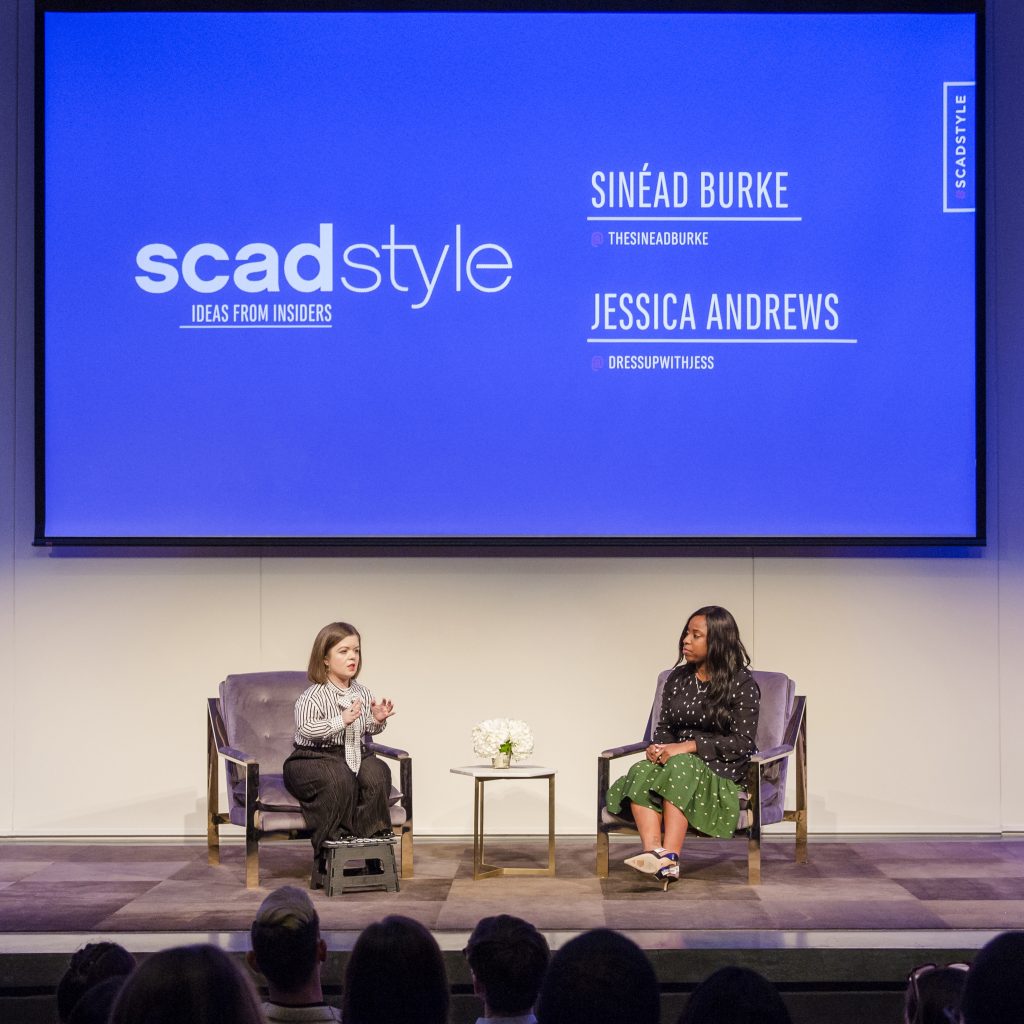Sinéad Burke and Jessica Andrews talk inclusion by design at SCADstyle

The notion of being the only person in the room who’s different is something that can be very uncomfortable. These barriers can either make or break you. SCADstyle wrapped up on Thursday, April 12 at SCADshow with a talk all about inclusion by design in the fashion industry. Teen Vogue fashion features editor Jessica Andrews interviewed writer and activist Sinéad Burke, who was born with a genetic mutation that affects bone growth called dwarfism. Students got a sense of how these fashion outsiders captured the attention of fashion insiders through their unique outlooks on the world.
“We have to embrace our discomfort,” Burke said. She shared her experience with being a “little woman” who happens to be into fashion, and it sparked the question — why aren’t more designers more inclusive of people with disabilities? When asked what she felt a solution was, Burke said, “Disabled people need to be a part of the conversation from the beginning.” Including underrepresented voices in the fashion industry conversation from the beginning is crucial because no one can relate more than someone that is actually affected.
Currently, Burke is working with Burberry. She shared with the audience that during the beginning stages of her working with the brand, she tried on kid’s clothes as well as women’s, neither of which fit because of her waist-to-hip ratio. “I have a 23-inch waist, like Kate Moss,” she said. After these engagements, Burberry began to make her custom clothing. Burke believes that it’s important to target minority voices to speak on what’s relevant to them. “Who is not in the room?” is a question that she urges fashion brands to ask themselves.
During the Q&A portion of the event, a student stood up and thanked Burke and Andrews for breaking barriers within the fashion industry. Andrews is the first African American woman to hold the title of fashion features editor for Teen Vogue, despite the publication being 15 years old. “We’re still breaking barriers in 2018,” Andrews said. She believes that if we’re not designing with specific people in mind, we’re leaving them out.
Being inclusive of all people in fashion begins with the brands. Each and every person sees the world through a completely different lens. In order to move forward and create a more inclusive future, students have to continue conversations such as these in order for change to take place. Let’s redefine fashion standards and be inclusive of all people.
























